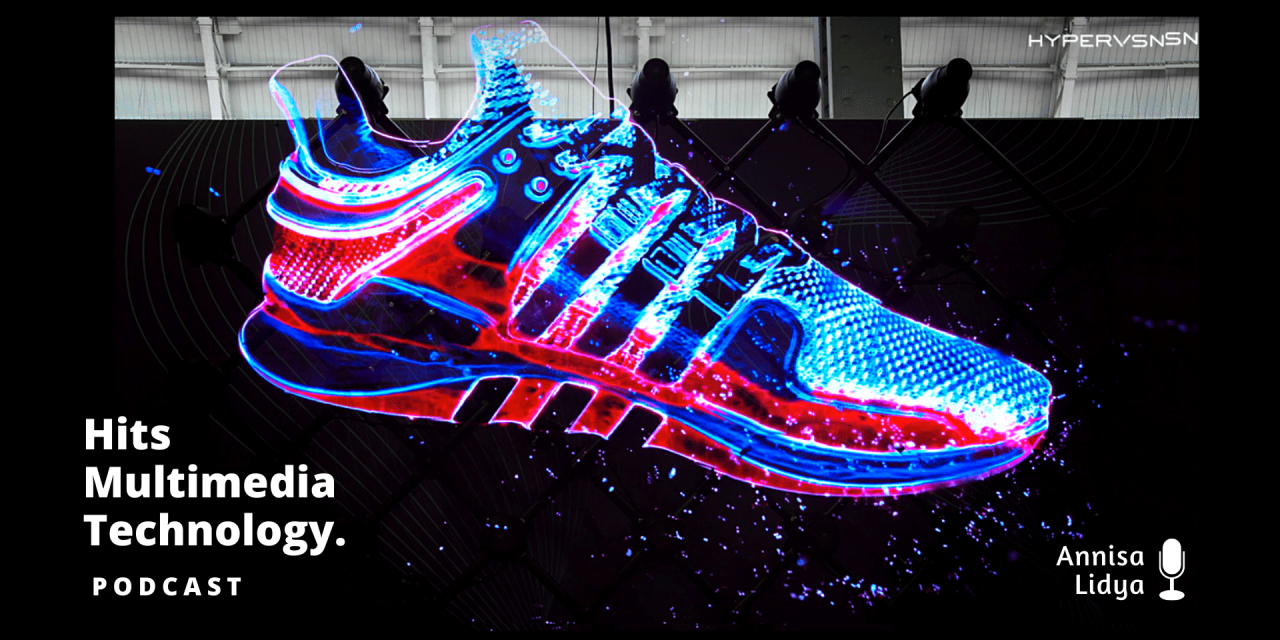Podcast of Hypervsn-3D Holographic Display Technology
Here is The HMT (Hits Multimedia Technology) Podcast. A podcast about Latest Multimedia Technology, which deliver the best hard hitting multimedia news. Play the audio below and have fun!
What is Hypervsn?
3D holographic technology has been around since the 60’s but has always been work in progress, and has never really taken off as a user-friendly technology. Well, we came across a new technology in 2018, by the name of Hypervsn. Hypervsn is a technology made by Kino-Mo, a British-born business (backed by Sir Richard Branson) who was showcasing Hypervsn, a projection display technology, which transform images and videos into 3D holograms, which to the naked eye appear to float in mid-air.
How about the installation?
Usually when it comes to holograms, it implies difficult installation, a lot of expensive equipment, and certain environment conditions. In the case with Hypervsn, it is the other way round. With weigh only 2.8 kg making Hypervsn projection units quite simple in installation. It is easy to mount and relocate them. There are various accessories making it possible to mount devices to ceilings, walls and shelves, and you do not need any special people to schedule media campaigns for you.
How does it work?
Hypervsn projection units display video content using rotating blades of LEDs that create a stunning 3D holographic effect, giving viewers the impression that the animated object is suspended in mid-air. Each motor has a 4 blade propeller on it, that uses a combination of chips, magnets and LED’s. As the blades with LEDs rotate, they create the illusion of an object floating in the air. The microprocessors and sensors pick up the angle, speed and position of each of the LEDs. They then send signals to each of the LEDs to create a realistic 3D image. The main hardware of the technology is a blade that emits a strip of light creating holograms of images and words. Multiple blades can be synchronised for larger holograms. As soon as this piece of hardware spins, eyes stop seeing hardware but a hologram, and the piece of hardware spins fast enough so a human eye does not see any rotation, and it sees the amazing holographic image.
Single projection unit called Hypervsn, Kino-mo also produces Hypervsn Wall, which is nothing but multiple units joined together to work synchronously allowing the creation of a hologram of pretty much any size and configuration. Report suggests that it is capable of a wall up to 10×20-metres in size, simply by adding more projectors to the wall.
What is the difference between Hypervsn and other display techonolgy?
Every day, people are surrounded by thousands of ads on a daily basis. All advertising providers are engaged in a cut-throat fight for every customer. So, what they actually do is help their customers stand out from other market players, truly drive a competitive advantage and instantly catch the eye of their potential clients. They provide their customers with much more than a projection unit. They give them an ultimate tool to eliminate the one-size-fits-all approach, foster advocacy and capture customers like no one else. 3D visuals generated with the help of Hypervsn projection units are incredibly realistic and clearly seen at a distance, even under brightly-lit conditions. Designed to work 24/7, Hypervsn are in fact energy-friendly, consuming less power than an electric bulb.
How about the target market?
Talking about target market, Kino-Mo is experiencing a huge demand for their solution from various business sectors, ranging from retail, food and fashion, to automotive, entertainment and travel. Right now, Hypervsn are building an extensive global distribution network. At the moment, they have official distributors in France, Japan, South Korea, India, Malaysia, USA and Australia, with more countries joining the list. Now, Kino Mo’s technology has already been applied by such market leaders as McDonald’s, NEXT, Coca-Cola, Procter & Gamble, Carrefour, Pernod Ricard, Hyundai, and others.
Well, the future of true holographic technology may still be develop in the future. At least, this Hypervsn Wall brings us one step closer. Still curious about it? Check out https://hypervsn.com/









Recent Comments